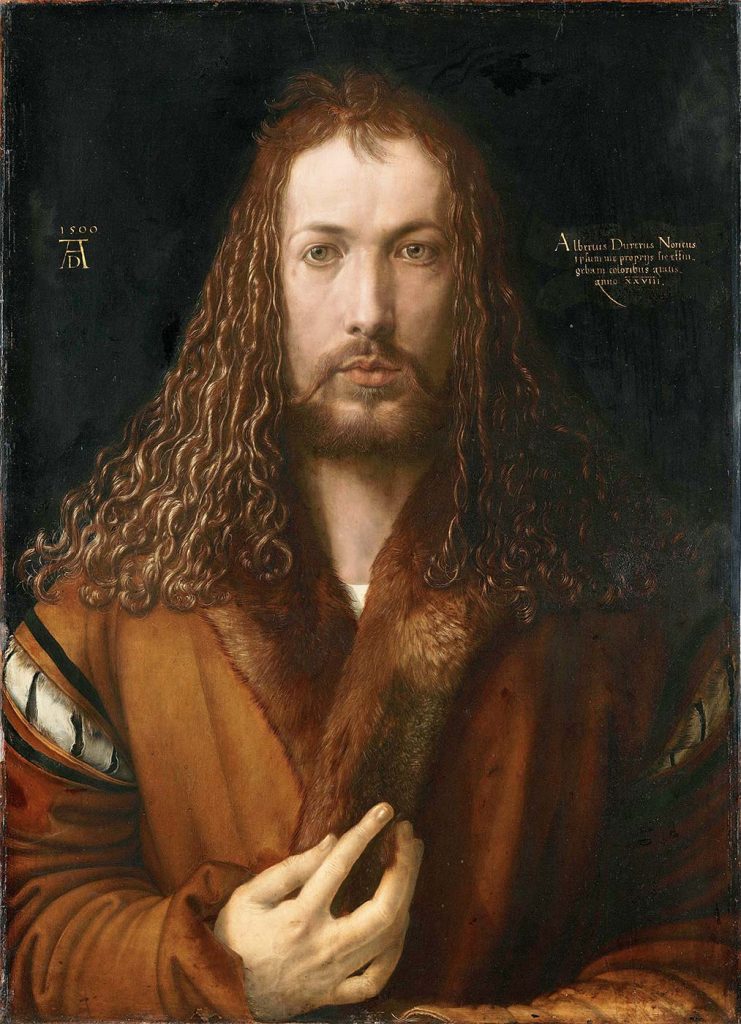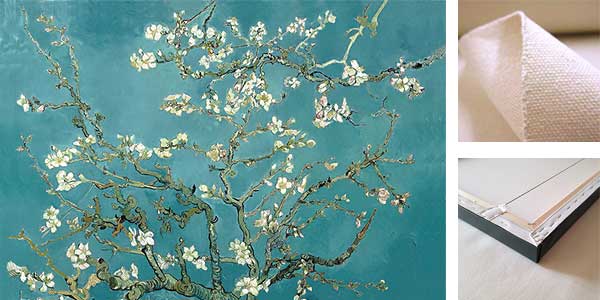
Self Portrait at the Age of Twenty Eight (Selbstbildnis im Pelzrock) by Albrecht Dürer was created in 1500. The painting is in Alte Pinakothek, Munich. The size of the work is 67,1 x 48,7 cm and is made of oil on wood.
About the Work
Self-Portrait (or Self-Portrait at Twenty-Eight) is a panel painting by the German Renaissance artist Albrecht Dürer. Completed early in 1500, just before his 29th birthday, it is the last of his three painted self-portraits. Art historians consider it the most personal, iconic and complex of these.
The self-portrait is considered remarkable because of its resemblance to contemporary representations of Christ, which could be interpreted as a stunning feat of either arrogance or blasphemy. The similarities with the conventions of religious painting include the manner in which the artist raises his hands to the middle of his chest as if in the act of blessing, while his direct gaze and the sober and earthy tones are clearly invoking Christ.
Dürer’s face has the inflexibility and impersonal dignity of a mask, hiding the restless turmoil of anguish and passion within. In its directness and apparent confrontation with the viewer, the self-portrait is unlike any that came before. It is half-length, frontal and highly symmetrical; its lack of a conventional background seemingly presents Dürer without regard to time or place. Read more in Wikipedia
About the Artist
Albrecht Dürer (21 May 1471 – 6 April 1528), sometimes spelled in English as Durer or Duerer, was a German painter, printmaker, and theorist of the German Renaissance. Born in Nuremberg, Dürer established his reputation and influence across Europe in his twenties due to his high-quality woodcut prints. He was in contact with the major Italian artists of his time, including Raphael, Giovanni Bellini and Leonardo da Vinci, and from 1512 was patronized by Emperor Maximilian I.
Dürer’s vast body of work includes engravings, his preferred technique in his later prints, altarpieces, portraits and self-portraits, watercolours and books. The woodcuts series are stylistically more Gothic than the rest of his work, but revolutionised the potential of that medium, while his extraordinary handling of the burin expanded especially the tonal range of his engravings; well-known engravings include the three Meisterstiche (master prints) Knight, Death and the Devil (1513), Saint Jerome in his Study (1514), and Melencolia I (1514). His watercolours mark him as one of the first European landscape artists. Read more in Wikipedia
Order a reproduction of this work (printed on canvas)
